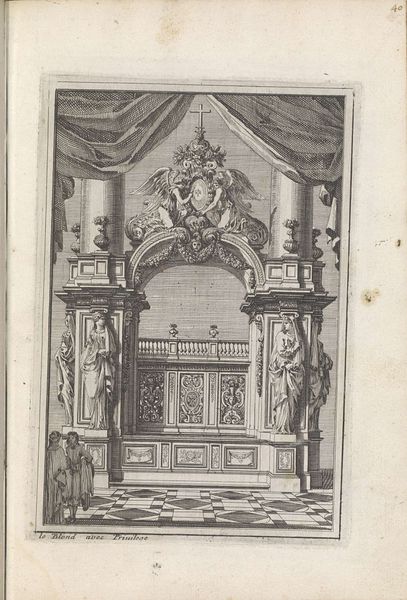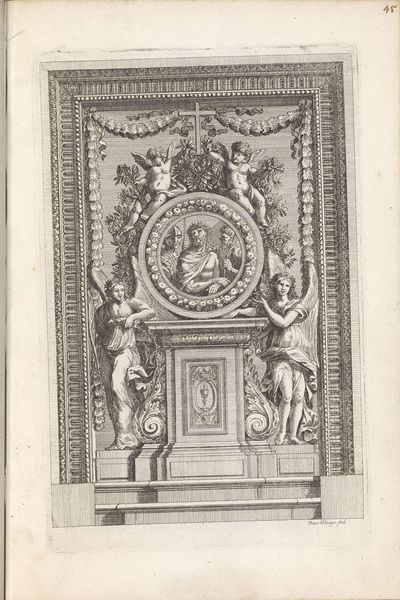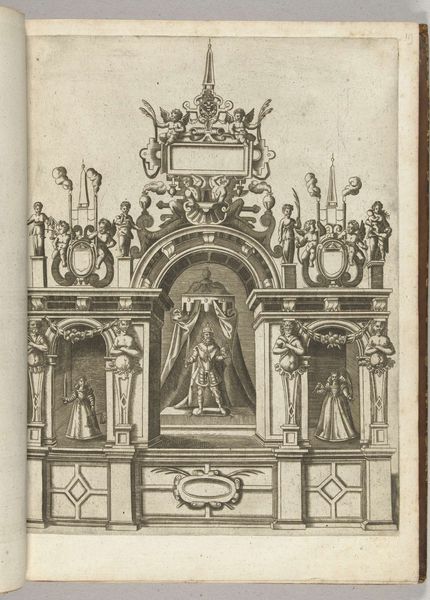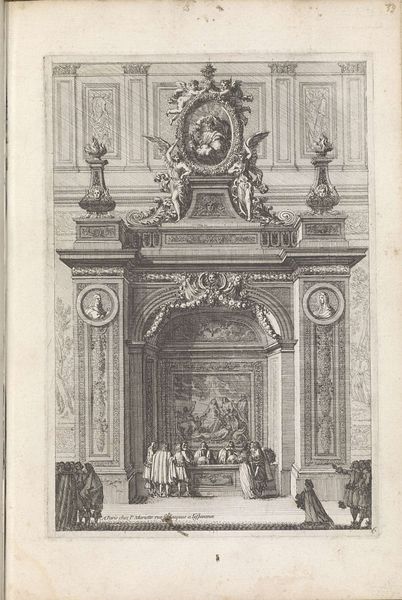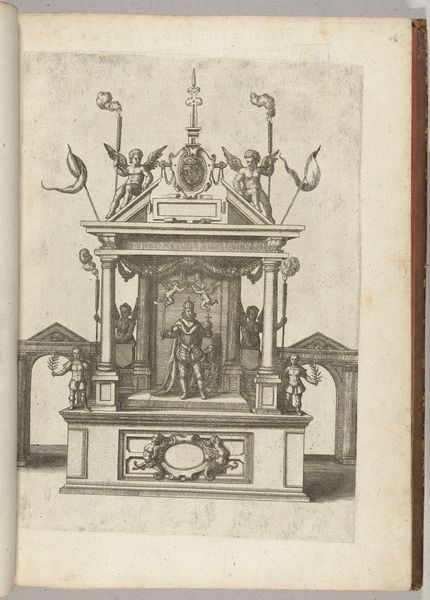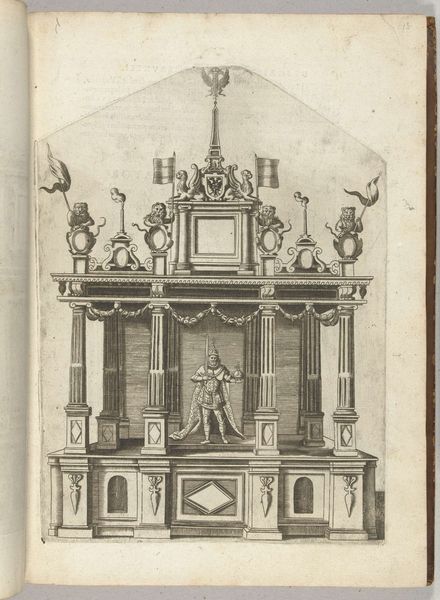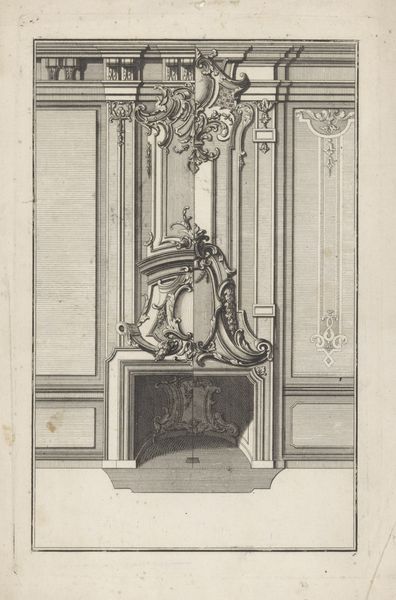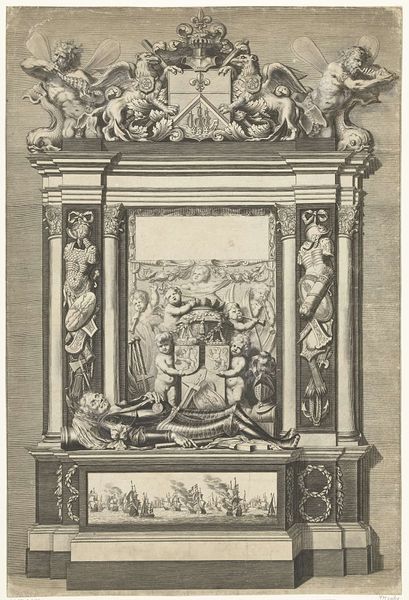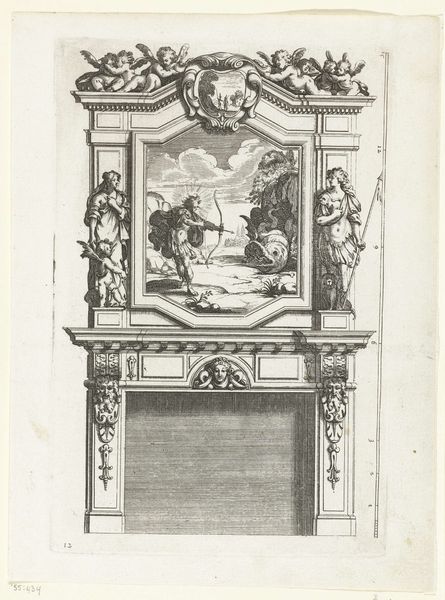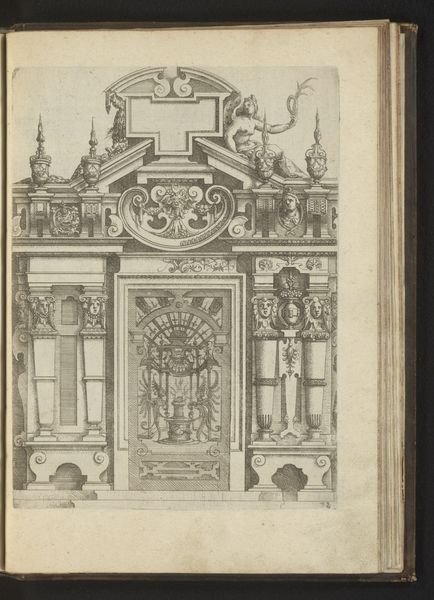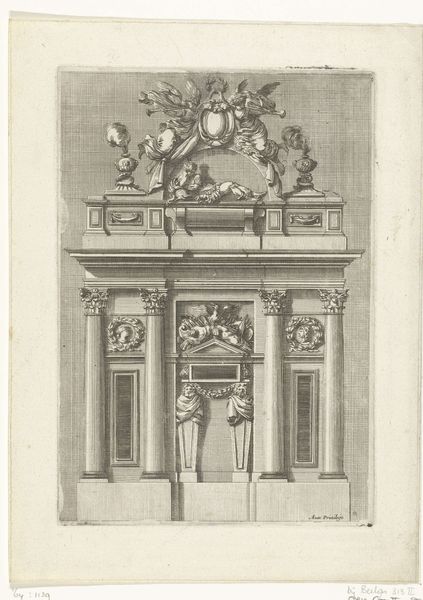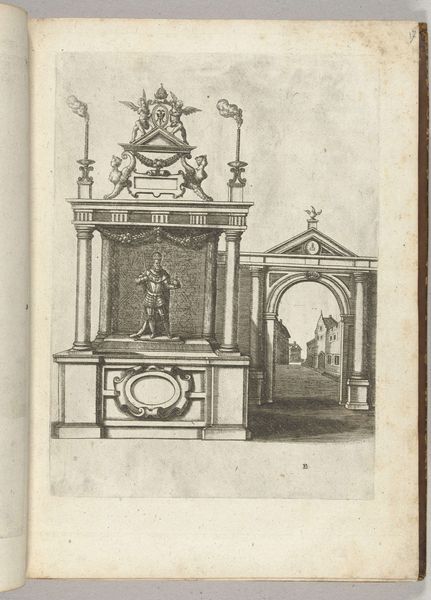
drawing, print, engraving, architecture
#
drawing
#
baroque
# print
#
form
#
line
#
engraving
#
architecture
Dimensions: height 225 mm, width 151 mm
Copyright: Rijks Museum: Open Domain
Curator: Here we have an engraving titled "Koorbank met aan weerszijden Ionische zuilen," or "Choir stall with Ionic columns on either side," created by Jean Lepautre around 1657-1665. It resides here at the Rijksmuseum. Editor: It strikes me as overwhelmingly ornamental. There is such intense detailing, but to what purpose? Curator: Lepautre was a prolific designer and engraver of ornament, playing a significant role in disseminating the Louis XIV style across Europe. Notice how he uses a meticulous linear style, indicative of baroque aesthetics, to map out the architecture and adornment. Editor: Baroque... well, exactly. It’s visually powerful and conveys this almost bombastic grandeur, but it’s inherently about power, isn't it? Church, state – visually asserting authority. This feels far removed from the human element. I wonder how this design functions as a place of spiritual reflection or communal gathering when the architectural forms seem so overpowering. Curator: That's a fascinating point. Think about the figures – barely visible behind what may be a choir railing. They appear almost insignificant, subsumed by the elaborate architecture, crowned by the angels above. One can argue that this placement underscores the ultimate insignificance of humanity when viewed against the glory of the divine, expressed through symbolic elements. Editor: True. Those Ionic columns flanking the composition act like visual gatekeepers, further cementing the message that only a select few can mediate access to this divine presence. Those classical symbols legitimize its influence. But is it truly spiritual, or just spectacle? Curator: Both, perhaps? Religious spectacle was essential in that era. The symbols reinforce faith; the dove signifies the Holy Spirit, the statues likely represent saints or virtues, connecting the observer to centuries of tradition. Line and form become not just aesthetics but powerful conduits of collective cultural memory. Editor: A powerful observation. Lepautre captured a moment where power dressed up as piety. Curator: Exactly. And within this ornamental overload, there remains an elegance that continues to hold a cultural charge. It sparks conversation, even centuries later. Editor: And that continued dialogue keeps the design from merely becoming an artefact. Thank you for elucidating its complexities.
Comments
No comments
Be the first to comment and join the conversation on the ultimate creative platform.
